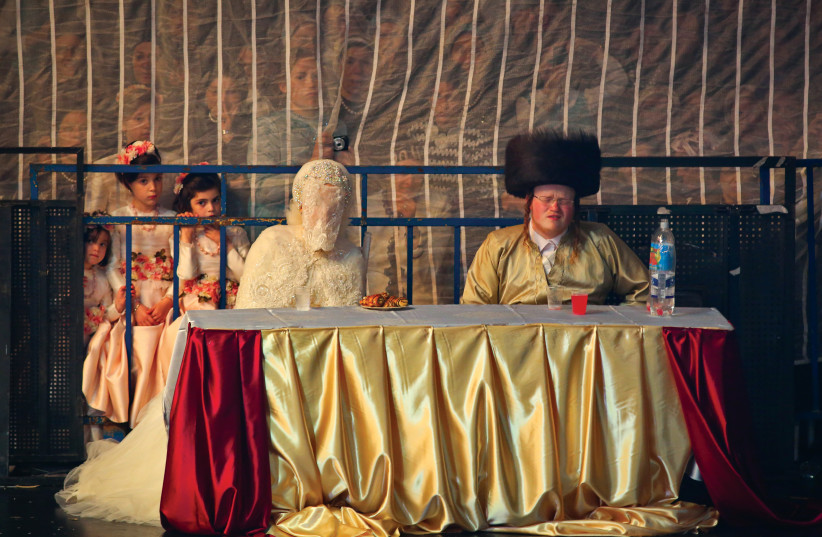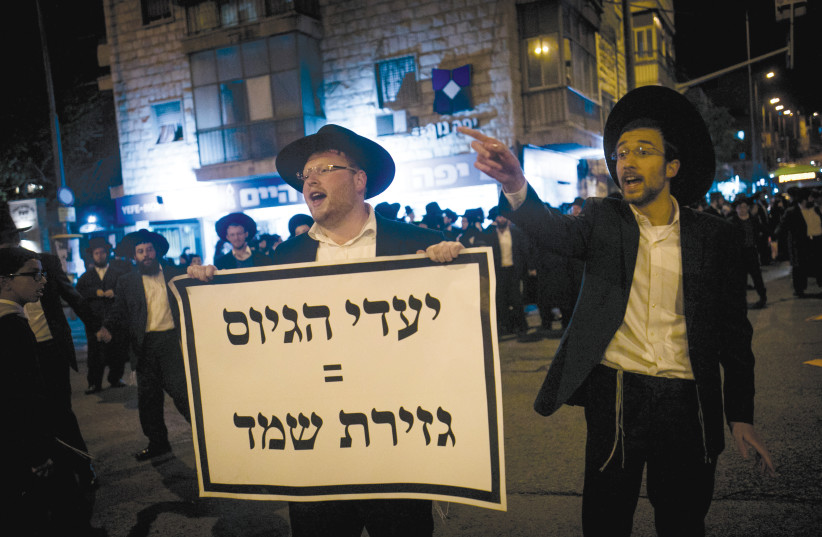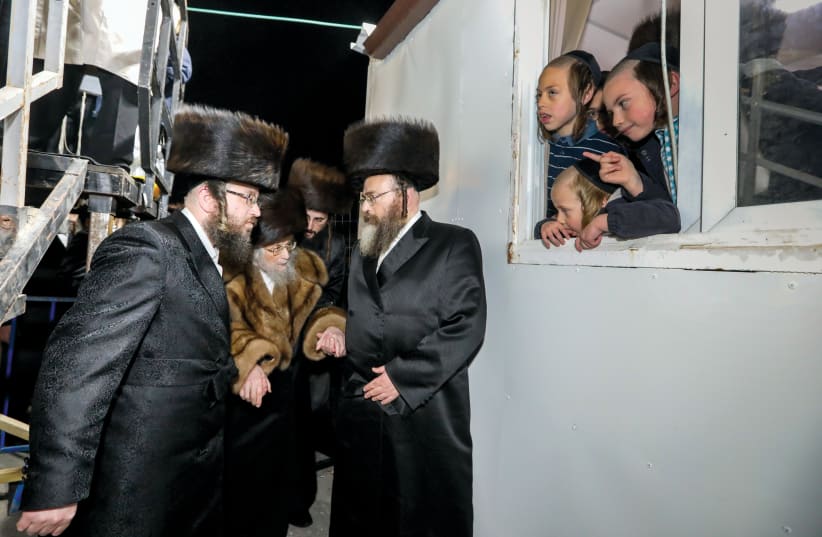Who are the Eda Haredit, or the “Fearful Community?”
Formed in Jerusalem in 1919 by Rabbi Yosef Haim Sonnenfeld, it includes various hassidim forming the “Haredi Council of Jerusalem” – once a small and radical group and today a still radical but larger group. They are by now about 40,000 persons, most of them live inside the Mea She’arim and Batei Ungarin neighborhoods, and a growing number of them now in Beit Shemesh.
The Eda Haredit is led by an independent rabbinical court, and chaired by two high bodies: the Ga’avad and the Ra’avad, respectively the leader of the rabbinical independent court and of the major yeshiva.
The community consists of smaller groups and communities: Satmar community in Israel, Toldos Aharon Hassidim, Toldos Avrohom Yitzchok Hassidim, Dushinsky Hassidim, Mishkenot Haroeim Hassidim, Breslov Hassidim, Pharisee congregation, Tiferet Jerusalem community, and the Jerusalem People community.
This community is unique in its opposition to Zionism and any cooperation with the State of Israel and its institutions. They live a very different and closed lifestyle, which forbids any participation in elections in the country or for the city council. Their position is basically that the establishment of the State of Israel is a rebellion against the nations of the world, and even worse, a rebellion against God that forbids any political organization for the Jewish people until the coming of the Messiah.


Zionism in their eyes is an abomination, and even the use of Hebrew was banished until not so long ago. Most of them do not receive any money from the State of Israel, and have their separate education institutions – all of them strictly in Yiddish, and easily recognizable through their special outfits, commonly called the “Zebras” due to the striped caftans they wear.
A small group within the Satmar (mostly living in Great Britain now) are known for their ongoing support for the Palestinians and also the anti-Zionist regime of Iran, but in the Jerusalem community, these acts are now highly criticized, albeit graffiti of the Palestinian flag can still be seen on the walls of the neighborhood. Most of their campaigns stand out in demonstrations against the desecration of the Sabbath in Jerusalem and against the desecration of graves across the country, but mostly in Jerusalem.
Eda Haredit is not to be confused with the “Neturei Karta” (in Aramaic: “Guardians of the City”), which is a more radical group that split from the Eda and who undertook to actively fight against Zionism in demonstrations and various activities, and not just be opposed. A significant part of the community is concentrated in the Geula and Mea She’arim neighborhoods in Jerusalem. Men of the community wear a flat and wide-brimmed hat, called a shtreimel in Yiddish slang. The women wear very modest clothes avoiding colors, and cover their heads with a tight handkerchief (never a foreign wig). In the Toldot Aharon stream, they shave their hair on the eve of their wedding.
For the men in the Eda, unlike among Lithuanians, it is not a binding norm to engage in Torah study at the kollel for a lifelong period. The men go out to work in various jobs that do not require academic education. Many of them in religion-related crafts, such as scribe, kosher supervision, slaughter, etc., and some of them are also successful businessmen, and they in turn support the community.
One of the major business incomes of the Eda is the separate Kashrut system called “Badatz,” an acronym for Bet Din Tzedek, which is a panel of qualified judges who conduct trials according to Jewish law and also decide on questions concerning Jewish law (like kashrut.) This court is not a tribunal under the laws of the State of Israel, but derives its authority to adjudicate only from the consent of the litigants who appear before it.
Certain laws, such as that of the Eda community, do not recognize the authority of the State of Israel, and the rulings are not legally valid but only halachic. The badatz is highly appreciated among various streams of the religious, including even non-haredim, as being the most reliable label. However, using it causes products to be much more expensive, and a decade ago, a group of seculars tried to launch a boycott against Israeli producers who imposed it on their consumers, for not allowing the secular public to buy products without the stamp of the Badatz. Some argued that they didn’t want to spend their money on an institution that burns the Israeli flag on Independence Day. The movement failed to remove this kashrut label, which still exists on a large number of products sold out of the haredi sector.
Inside the community, the attitude toward the Israeli reality varies among families. While in recent years more men who are not members of the Eda and not even haredim have been able to join the hakafot at the end of the Sukkot festival, in other places the harsh opposition continues.


For example, in one of the narrowest alleys inside Mea She’arim, commonly called the Casbah of the neighborhood, there is a three-room apartment in which live a 14-member family, the Krausses. On the door there is a sign that says: “In this house lives a non-Zionist Jew” and Yoellish Krauss, the father, explains that he buys his flour and his milk from non-Zionists – in this case, from an Arab village nearby – in order to bake a non-Zionist bread and feed his children with non-Zionist milk. Until a few years ago, Krauss was the living spirit behind all the demonstrations of his community, including the most violent, in any attempt by the Israeli establishment to interfere in their life. But he admits that even he could not prevent his children from using Hebrew when they play in the neighborhood.
A new and unfamiliar group called Sikrikim has been very active in the northern part of the city, violently opposed in recent months to the light-rail project there, and making it hard for a part of hared society in the neighborhood that wishes to get the light-rail.
The group, which numbers only a few dozen yeshiva students, is today defined as the most extreme and wild faction operating in Jerusalem, all led by a 25-year-old who has pledged there will be no light-rail under his watch in that neighborhood.
The haredi newspapers and websites, which usually refrain from criticizing actions of the Eda, go out of their way when it comes to Sikrikim, in order to clarify how much their actions infuriate the haredim themselves. The work in the area, led by the Jerusalem Municipality and the Ministry of Transportation through the Mass Transportation program and carried out by the Moriah Company, will be built between the intersections of Eretz Hefetz and Harel Brigades streets, and to the end of Bar-Ilan Street at the corner of Eli HaCohen. However, strong and violent attacks perpetrated by the Sikrikim have already caused a significant delay in the plan.
Peleg Yerushalmi
In 2012, a split occurred between followers of Rabbi Auerbach’s members of the Bnei Torah party they founded and the rest of the haredi factions. After the 2013 election, Rabbi Steinman and Rabbi Chaim Kanievsky ordered the removal of Bnei Torah supporters from their subordinate educational institutions, which led to the establishmsent of designated educational institutions for Rabbi Auerbach’s supporters and the establishment of the Jerusalem Faction.
But things did not go smoothly, and conflicts that escalated into physical confrontations and increasing violence led to a deepening of the rift between the parties.
Yeshiva students identified with Rabbi Auerbach were expelled from the yeshivot, matchmaking (shiduhim) was canceled, and there was strong pressure on the relatively small community of Bnei Torah. In the 2013 election, a representative of Bnei Tora, Rabbi Chaim Epstein, entered the council and was appointed deputy mayor under mayor Nir Barkat, but the tension continued.
The faction adopts a more conservative ideology than the main Lithuanian current, but less extreme in relation to the members of the haredi community of Neturei Karta. A notable dispute between the faction and the mainstream is the order for yeshiva members not to report to the IDF recruitment bureau for the purpose of obtaining the status of “his art and teaching” a term meaning that the person is not to be enrolled in the army.
As a result, many members of the faction are considered to be evading recruitment, and from time to time some of them are arrested. The faction holds demonstrations every time someone who does not show up is arrested, and has even set up dedicated support organizations for these young men.
With regard to the entry of students into the labor market, the faction takes a conservative position in relation to the mainstream, and the participation of men associated with the faction in the labor market is smaller. Although in the pre-split Lithuanian world it was customary to receive government budgets for educational institutions, some of the faction’s educational institutions oppose their budgeting from the State for fear of government intervention in the curriculum.
Today, Bnei Torah is still represented at the City Council and as part of Mayor Moshe Lion’s coalition, but Epstein is no longer deputy mayor.
This is the fourth in a series on the different groups that compose Jerusalem’s haredi sector.
